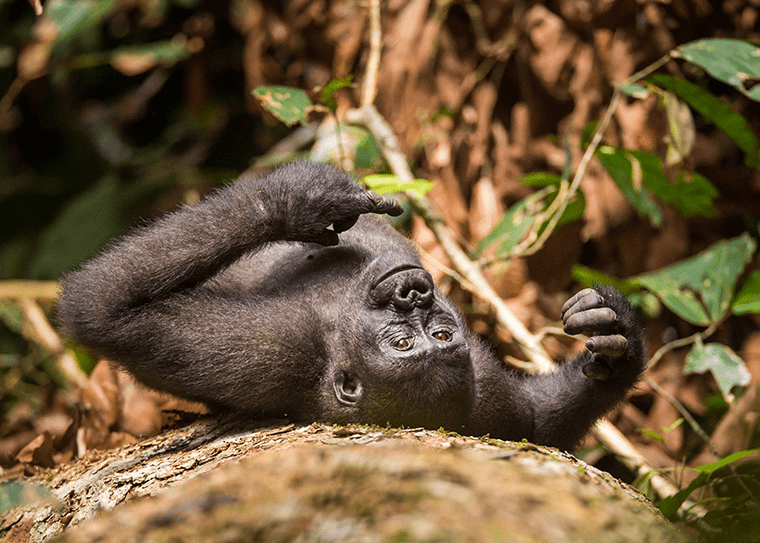Chimpanzees and gorillas can both recognize individuals of the other species and relate to them in the wild on an individual level, observers claim. Not all the interactions were positive, but generally, they appeared to be positive for both. One might say, Apes together strong.
Last year, horrific accounts were released of chimpanzees killing gorilla babies in Loango National Park, Gabon. Nothing similar had been reported before, and the authors of that study acknowledged playful interactions had been sighted elsewhere.
The most recent account demonstrates both positive and negative interactions are common when the two species live close together, as they do in the Ndoki Forest of the Congo.
“Rather than thinking about chimpanzees alone, we should be thinking about them within diverse and dynamic habitats where they are actively engaging with other species and play an integral role in the persistence of the unique ecosystems in which they exist,” said Dr David Morgan of Lincoln Park Zoo in a statement.
The researchers found gorillas don’t think all chimpanzees look alike and vice versa. “An example of what we found might be one individual traveling through a group of the other species to seek out another particular individual,” Professor Crickette Sanz of Washington University in St Louis said. “We were also able to document such interactions over time and in different contexts in this study.”
Chimpanzee and gorilla diets are similar at certain times of the year, putting them in potential conflict – but at other times, they diverge as a wider variety of foods become available. The Gabon killings occurred when the two species were in competition; explaining why positive or neutral interactions occur at other times, rather than the apes just ignoring each other.
The authors considered predator avoidance as a factor, but could find no sign that association made either species safer against any of their main non-human threats. Moreover, “Gorillas within groups venture far from the silverback who is thought to be a protector from predation,” Sanz said. It’s unlikely spending time with a chimpanzee group would be more helpful in this regard.

When you put it like this, it’s not so surprising chimpanzees would want to hang with western lowland gorillas like this one in Nouabalé-Ndoki National Park. Image Credit: Kyle de Nobrega
A more promising explanation is the apes found some benefit in feeding together. Far more distantly related animals often co-operate to find/obtain food, and in 34 percent of the cases, the authors observed gorillas and chimpanzees were feeding at the same tree. In another 18 percent of cases, each was feeding on different foods while staying close.
If there was one food that, for example, chimps could climb to reach while gorillas had the strength to open, this might solve the mystery. Instead, at least 20 plant species were observed being consumed in these co-feeding operations, although figs were a comfortable favorite.
The authors think the apes may be trading information about foods, and possibly even techniques to access them.
Even if food is part of the story, more is going on. Young gorillas and chimps were both seen looking out for specific members of the other species to play with, although sometimes gorilla mothers intervened to stop such interactions.
“The strength and persistence of social relationships that we observed between apes indicates a depth of social awareness and myriad social transmission pathways that had not previously been imagined,” said Washington University doctoral candidate Jake Funkhouser.
The capacity to see individuals across species boundaries may be highly symbolic for humans and say something important about ape intelligence, but it’s not all good news. Funkhouser noted the interactions increase the risk of infectious diseases devastating two of our nearest relatives in one go, rather than just one.
The authors were unprepared for so much mingling, but discovered examples of such interactions had been reported as far back as 1966 without attracting much attention. They note the relevance of their findings in light of evidence multiple hominin species co-existed in the same ecosystems around 2 million years ago.
The paper is open access at iScience
Source Link: First Evidence Chimpanzees And Gorillas Form Lasting Relationships In The Wild